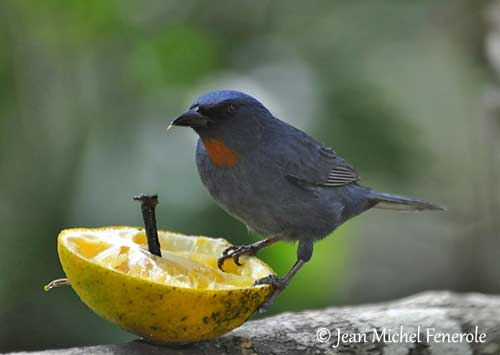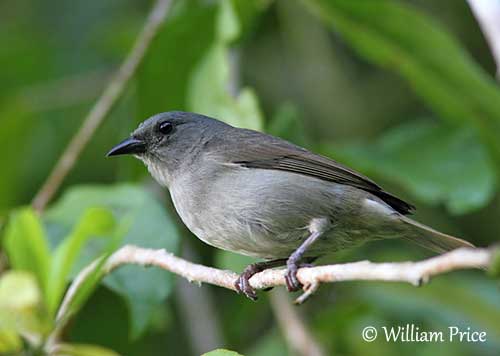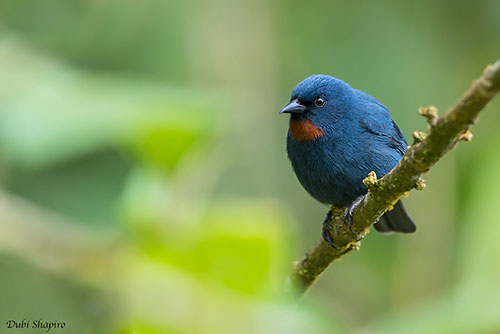
Fr: Pique-orange de la Jamaïque
Ang: Orangequit
All: Braunlatz-Ammerfink
Esp: Semillero Azulillo
Ita: Arancero
Nd: Jamaicaanse Suikervogel
Sd: apelsinsmyg
Photographers:
Jean Michel Fenerole
Photos d’Oiseaux du monde
Ken Havard
My Bird Gallery & Flickr gallery 1 & Flickr gallery 2
William Price
PBase-tereksandpiper & Flickr William Price
Dubi Shapiro
Dubi Shapiro Photo Galleries
Text by Nicole Bouglouan
Sources:
HANDBOOK OF THE BIRDS OF THE WORLD Vol 16 by Josep del Hoyo- Andrew Elliot-David Christie – Lynx Edicions – ISBN: 9788496553781
BIRDS OF THE WEST INDIES – by Herbert Raffaele, Kristin Williams et Tracy Pedersen – Helm – ISBN: 9780713649055
A Photographic Guide to the Birds of Jamaica by Ann Haynes-Sutton, Yves-Jacques Rey-Millet, Audrey Downer, Robert Sutton – Editor: Bloomsbury Publishing, 2010. ISBN: 1408133229, 9781408133224 - 336 pages
Neotropical Birds – Cornell Lab of Ornithology
Orangequit
Euneornis campestris
Passeriformes Order – Thraupidae Family
INTRODUCTION:
The Orangequit is endemic to Jamaica where it is found in humid forests and woodlands, mainly at mid-elevations. It feeds on fruit, seeds and nectar from flowers in trees and shrubs.
This species is described as “fairly common to locally common” but some declines of the population follow habitat destruction. But the Orangequit is not currently threatened.
DESCRIPTION OF THE BIRD:
Biometrics:
Length: 14 cm
The Orangequit adult male has grey-blue plumage. It appears dark in low light but mostly bright blue in sunlight.
We can see a bright orange-red throat-patch contrasting with the overall blue plumage. There is a blackish eye stripe extending on lores and in front of the eye.
The black bill is slightly decurved. The eyes are dark brown. Legs and feet are black.

The adult female has brown upperparts. Wings and tail are olive-brown with paler edges.
The underparts are dull greyish-white and faintly streaked, but the flanks are washed pale buff.
On the head, crown and nape are olive-grey.
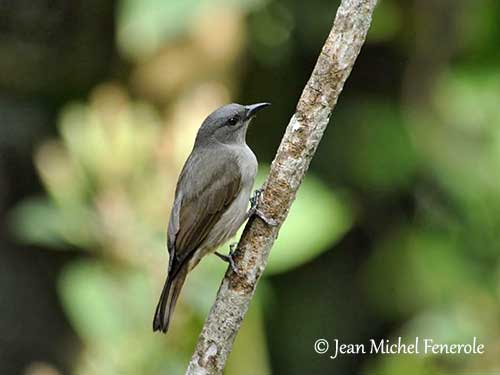
The juvenile is similar to female. The immature male needs two years to obtain the adult plumage, following a patchy blue and brown transitional appearance in the second year.
RANGE:
The Orangequit is endemic to Jamaica. It is locally common at Newcastle, Hardwar Gap, Mandeville and Anchovy.
HABITAT:
The Orangequit frequents humid forest and open woodland at all elevations, and can be seen in shade coffee plantations. This species is visible from sea-level up to 1,500 metres of elevation, but more often at mid-elevations.
CALLS AND SONGS: SOUNDS BY XENO-CANTO
The Orangequit utters a thin, high-pitched « tseet » or « swee » and sometimes « fi-sweee ».
During the breeding season, several individuals perched togetehr among the dense vegetation, produce bursts of intense calling.
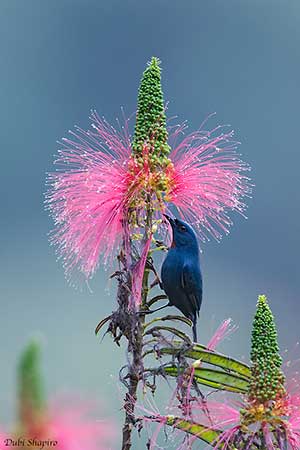
BEHAVIOUR IN THE WILD:
The Orangequit feeds primarily on nectar from flowers. It also consumes fruit from Cecropia and Ficus, seeds and invertebrates.
It forages in trees and shrubs from low to mid-canopy. It is also attracted to tree sap oozing from holes excavated by sapsuckers. This species is often observed at feeding stations. It is usually seen alone or in pairs.
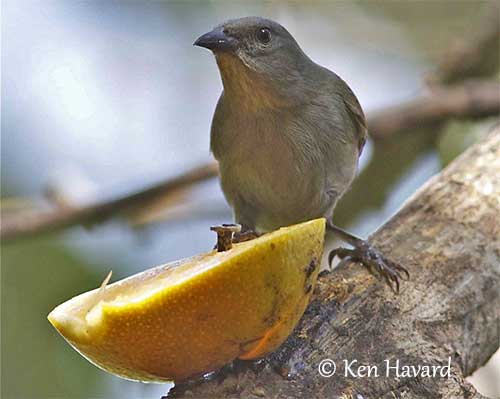
During the breeding season, several birds gather in groups and call loudly while perched in the dense vegetation.
The courtship displays are unknown, but we can suggest that the bright-coloured throat-patch is enhanced by adapted postures during the displays.
The Orangequit is sedentary. It only moves over short distances throughout its habitat. It has mostly rounded wings.
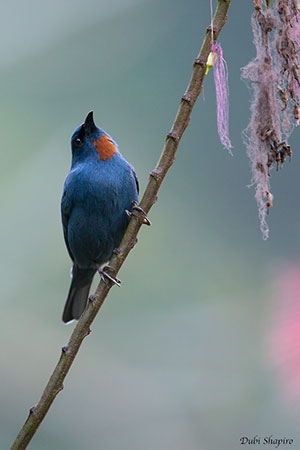
REPRODUCTION OF THIS SPECIES:
The breeding season takes place in April-June.
The Orangequit may use sometimes abandoned nest of Jamaican Becard, but usually, the birds build an open, cup-shaped structure with grass and plant fibres. The nest is placed in tree or shrub, up to six metres above the ground.
The female lays 2-4 white eggs with dark markings on the larger end. The incubation is performed by the female.
